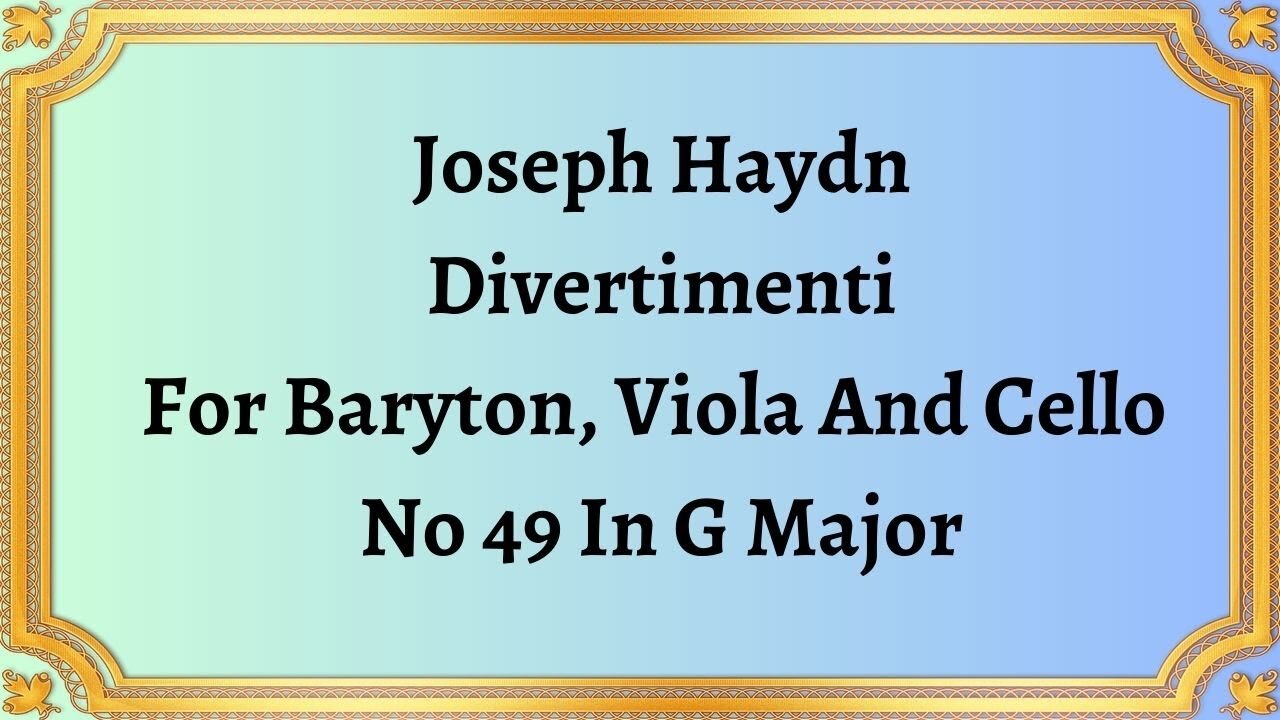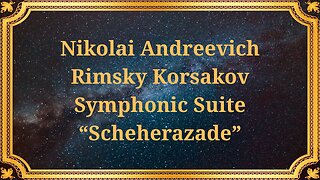Premium Only Content

Joseph Haydn Divertimenti For Baryton, Viola And Cello No 49 In G Major
#JosephHaydn #Divertimenti #Baryton #Viola #Cello #Gmajor #chambermusic #Moderato #Menuet #Adagio #Presto #Vivace #classicalmusic #musicalcomposition
Joseph Haydn is one of the most significant composers of the Classical era, and he is renowned for his mastery of a wide variety of genres, including opera, symphony, chamber music, and keyboard music. One of the most significant works in his repertoire is the Divertimenti for Baryton, Viola, and Cello.
The Divertimenti for Baryton, Viola, and Cello No. 49 in G major is a delightful work composed in 1773. The baryton is now an obsolete instrument similar to a cello, but with added sympathetic strings that are played by the performer plucking them with the left thumb. This composition's unique instrumentation reflects Haydn's affinity for creating novel and innovative soundscapes that push the boundaries of conventional chamber music.
The Divertimenti for Baryton, Viola, and Cello No. 49 in G major consists of six movements, each displaying Haydn's technical prowess, creativity, and melodicity. The opening movement, marked Moderato, is lively and features a charming melody played by the baryton. The second movement, marked Menuet and Trio, is a stately dance in triple meter that showcases the performers' ability to play together in perfect tandem.
The third movement, marked Adagio, is a slow and serene section that is characterized by a lyrical melody that moves seamlessly between the different instruments. This movement highlights the expressive capabilities and sensitivity of each player. The fourth movement, marked Presto, is a quick and playful section that features rapid-fire note passages and virtuosic bowing techniques.
The fifth movement, marked Menuetto and Trio, is a return to the dance form in triple meter, but with a more upbeat tempo. This movement provides a perfect balance to the Adagio movement's serenity. Finally, the sixth and concluding movement, marked Vivace, is a lively and joyous finish to the piece. This section features a sparkling melody that is played by each instrument, creating a sense of unity and cohesion in the ensemble.
In conclusion, the Divertimenti for Baryton, Viola, and Cello No. 49 in G major is a superb example of Joseph Haydn's ability to create beautiful and innovative chamber music. The piece's unique instrumentation and Haydn's melodic and structural mastery create a sound that is both enchanting and sophisticated. This piece continues to be enjoyed by audiences across the world and remains a favorite of chamber music performers.
You have the opportunity to support the channel https://destream.net/live/RadSiarAl/donate
-
 41:38
41:38
Classical music_Music Inspiration
1 month agoNikolai Andreevich Rimsky Korsakov Symphonic Suite “Scheherazade”
1511 -
 LIVE
LIVE
RiftTV
4 hours agoE-Girl TOTAL WAR!? Right Wing Ecosystem EXPLODES | The Rift | Guests: Chrissie Mayr, Braeden Sorbo
927 watching -
 2:02:16
2:02:16
The Illusion of Consensus
19 days agoDr. Robert Malone On The Current State Of MAHA
8131 -
 47:39
47:39
Donald Trump Jr.
6 hours agoRussia Hoaxers Must Face Justice, Interview with The Federalist's Sean Davis | TRIGGERED Ep.265
65.7K39 -
 1:05:55
1:05:55
BonginoReport
3 hours agoBiden is a BIG BULLY! - Nightly Scroll w/ Hayley Caronia (Ep.107) - 08/07/2025
33.5K17 -
 1:16:24
1:16:24
Kim Iversen
5 hours agoAIPAC NATION: Israel First, Who Really Runs Washington?
71.6K141 -
 LIVE
LIVE
Nerdrotic
2 hours ago $0.70 earnedInvestigations Into Earth's Moon | Forbidden Frontier #110
436 watching -
 LIVE
LIVE
Quite Frankly
8 hours ago"The Unconscious Mind & Hypnosis" ft. Giulio Anselmo 8/7/25
493 watching -
 1:06:01
1:06:01
vivafrei
3 hours agoTrumps Crackdown on the Census! Corruption in Canada, Eh! Tulsi's Interview! Carville's Apology!
32.2K20 -
 15:32
15:32
AndresRestart
8 hours ago $0.11 earnedTHESE Mario 40th Anniversary Rumors Make Way More Sense Than That Collection "Leak"
6.39K1